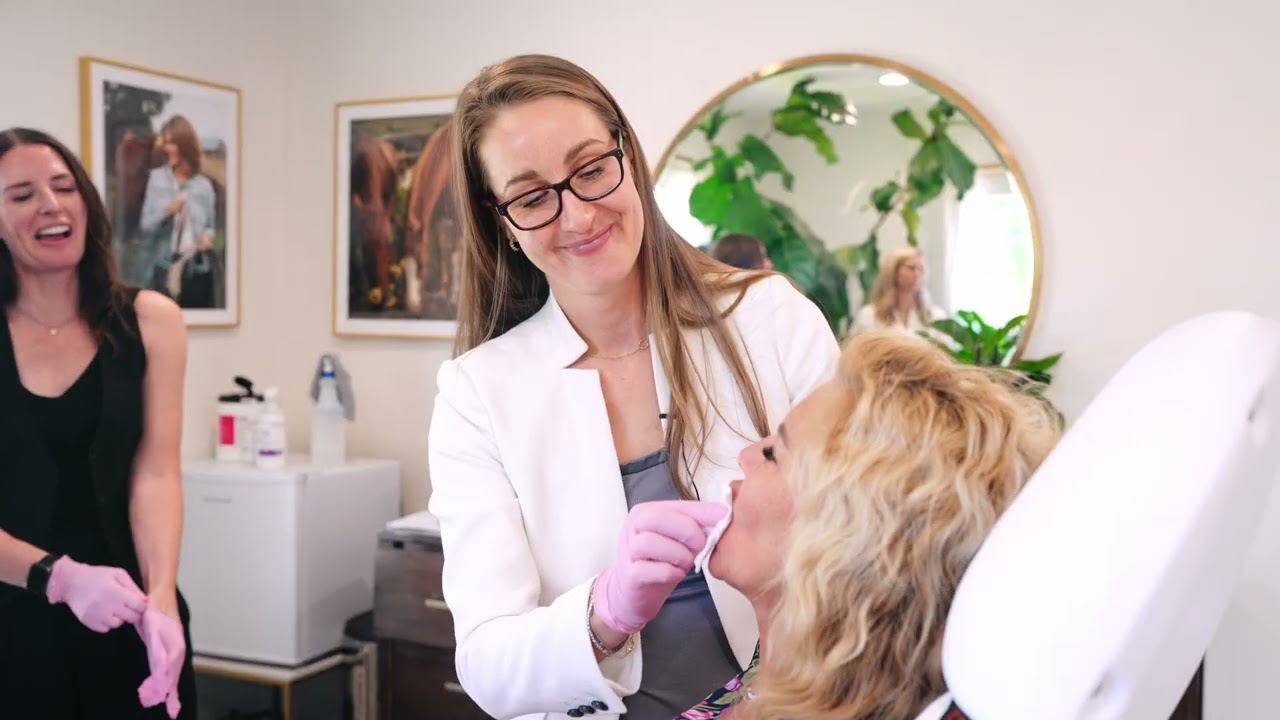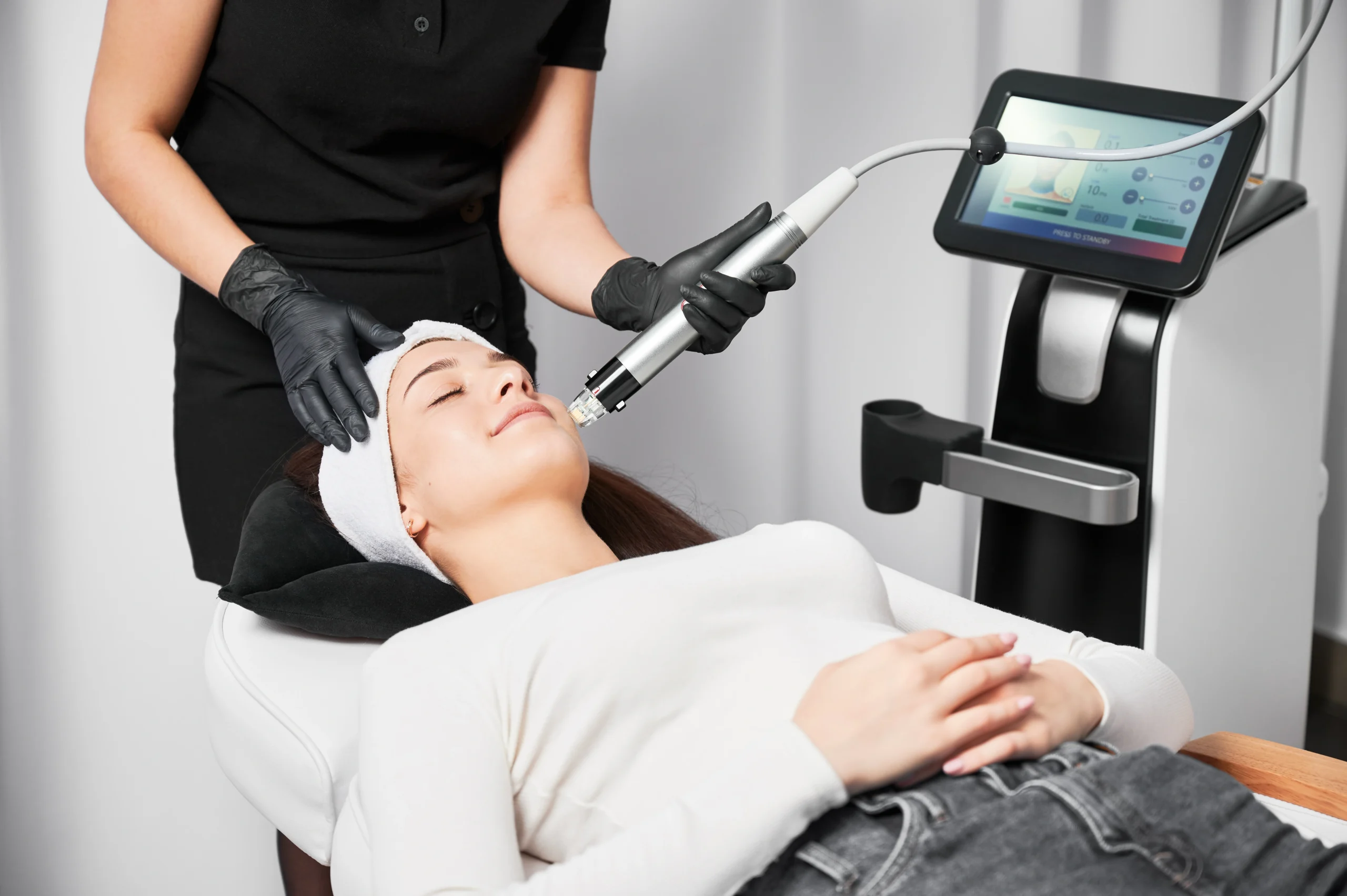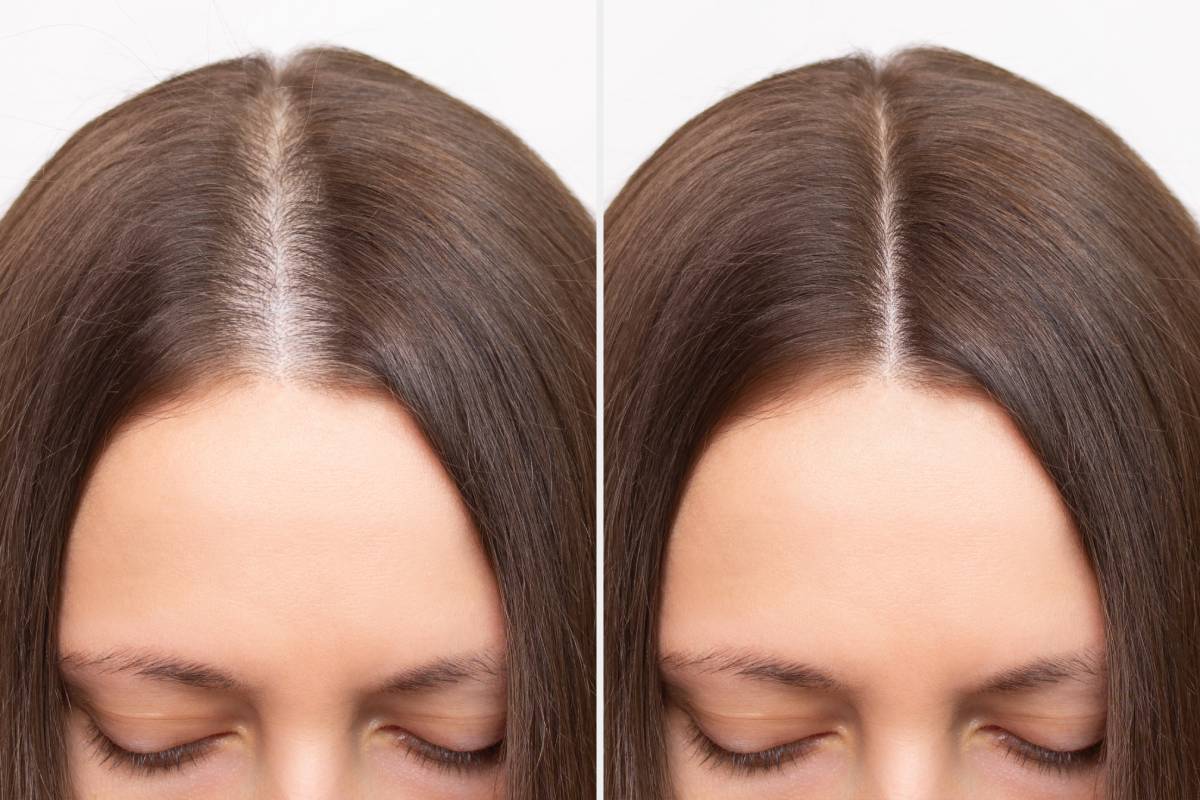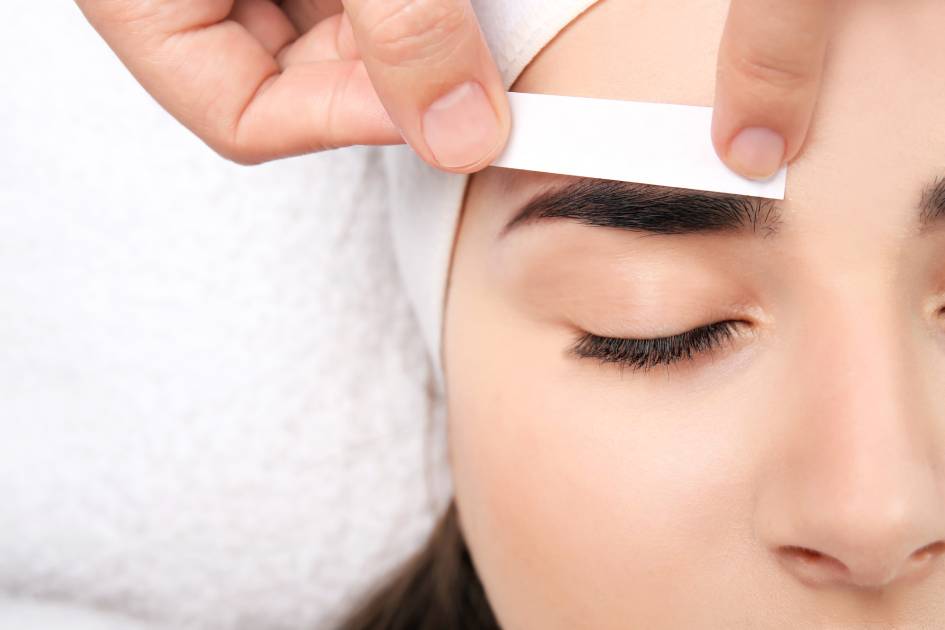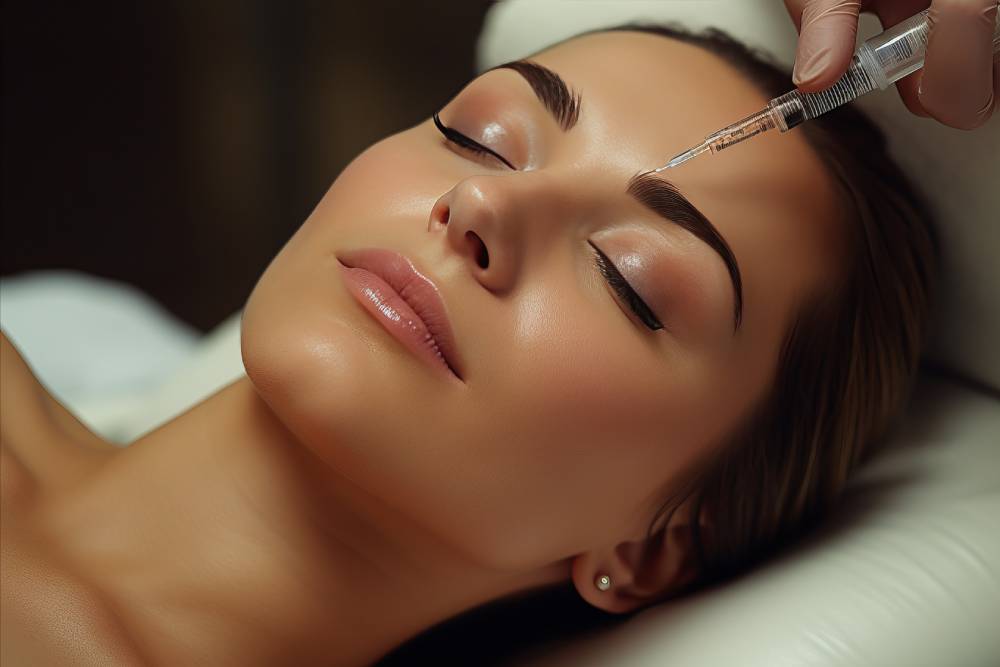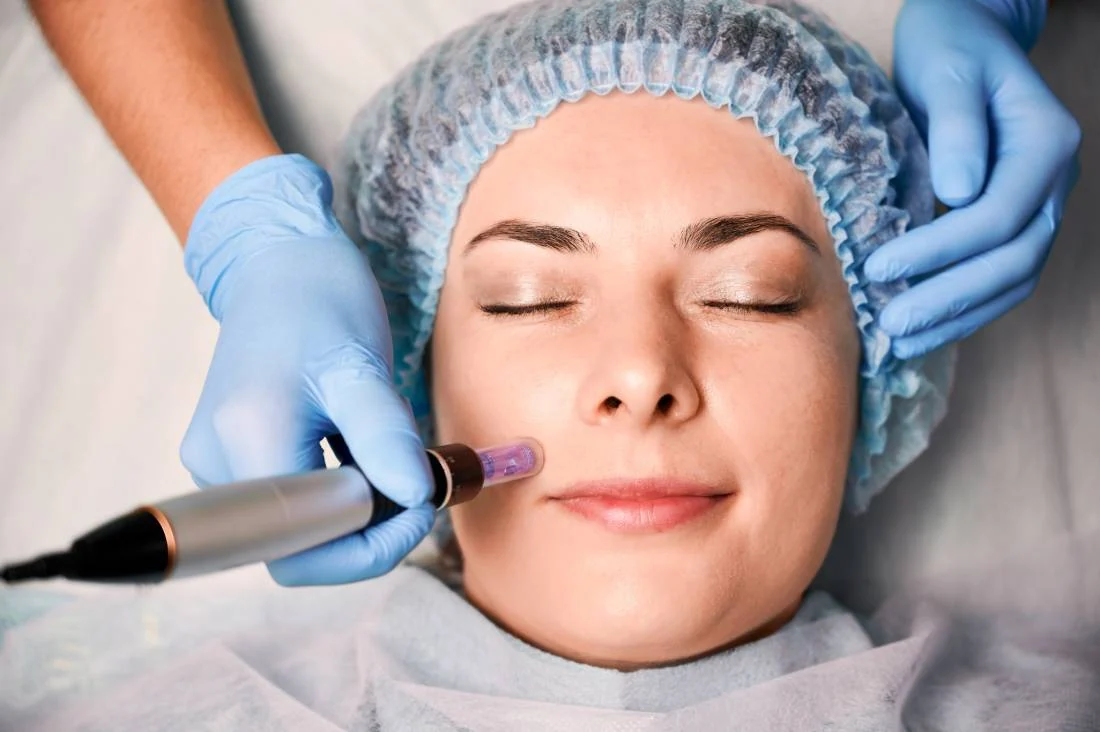Introduction
When it comes to non-surgical cosmetic treatments for wrinkle reduction, Botox and Dysport are two of the most popular options available today. Both are forms of botulinum toxin injections that smooth wrinkles by temporarily paralyzing muscles, yet they differ in terms of formulation, onset of action, and diffusion characteristics. Understanding the distinctions between Botox and Dysport is vital for those contemplating these wrinkle-reduction procedures, as grasping the nuances can aid in reaching an educated choice that harmonizes with their desired cosmetic outcomes and particular facial areas of concern.
What is Botox?
Botox is a commercial brand name for a specific toxin derived from the Clostridium botulinum bacterium. It has medical applications in treating certain muscular disorders and is also utilized cosmetically to diminish the appearance of wrinkles by temporarily paralyzing muscles.
Acetylcholine is a chemical messenger that sends instructions from nerve cells to muscles. By blocking this messenger’s release, Botox reduces muscle activity in the area that is treated. This can help alleviate issues like eye twitching or chronic migraines, and cosmetically, it can smooth out facial wrinkles.
What is Dysport?
Another brand name for a botulinum toxin medication that is comparable to Botox is Dysport. Because it temporarily paralyzes muscles, it is mostly used to treat muscle spasms and minimize the appearance of wrinkles. The active ingredient in Dysport is a type of botulinum toxin known as abobotulinumtoxinA.
Like Botox, Dysport works by blocking the nerve signals needed for muscles to contract, temporarily reducing muscle activity. As a result, the skin covering those muscles seems smoother. Compared to Botox, Dysport tends to spread a little more, which can be useful for treating wider areas but necessitates careful administration to prevent hitting undesired muscles.
Differences in Composition and Molecular Structure
Botox and Dysport both contain botulinum toxin, but there are differences in their composition and molecular structure that affect their usage and effects:
Active Ingredient Concentration and Composition:
- Botox contains onabotulinumtoxinA, a purified form of botulinum toxin type A. It is formulated with human albumin (a protein) and sodium chloride.
- Dysport contains abobotulinumtoxinA, another formulation of botulinum toxin type A. It also includes human albumin and lactose, along with the botulinum toxin.
Molecular Structure and Complex Size:
Both Botox and Dysport are formulated as complexes that include the botulinum toxin protein along with other stabilizing proteins. However, the size and composition of these complexes can vary:
- Botox has a complex size of about 900 kDa (kilodaltons).
- Dysport generally has a smaller complex size of around 500-900 kDa, which might contribute to its ability to spread more within the injected area.
Units of Measurement:
There is a difference in the measurement units between Dysport and Botox. Dysport typically requires a higher dosage in terms of units to achieve similar effects to Botox due to differences in how the units are measured and the biological activity of the formulations.
Differences in Dosage and Dilution
The differences in dosage and dilution between Botox and Dysport are significant and should be carefully considered by healthcare providers when choosing a treatment for patients. Here’s how they differ:
Dosage
Unit Differences:
- There is no direct comparison between Botox and Dysport’s measuring units. Dysport is generally more diluted than Botox, meaning more units of Dysport might be required to achieve the same level of muscle paralysis as a smaller number of Botox units.
- For example, it is commonly cited that approximately 2.5 to 3 units of Dysport are equivalent to 1 unit of Botox. This ratio can vary based on the treatment area and individual patient characteristics.
Clinical Application:
- Because Dysport has a tendency to spread more than Botox, it is often preferred for larger areas that require a more diffuse effect, such as the forehead. However, this characteristic requires careful handling to avoid unwanted diffusion to adjacent muscles.
Dilution
Preparation for Injection:
Both Botox and Dysport are supplied as powders that must be reconstituted with saline before injection. The dilution can significantly affect the diffusion of the product, influencing both the efficacy and safety of the treatment.
- Botox typically might be diluted with 2.5 mL of saline for cosmetic uses, though the specific amount can vary based on the desired application and the area being treated.
- Dysport necessitates a distinct dilution strategy, with some practitioners opting for a larger volume of saline to achieve a more spread-out effect, depending on treatment objectives.
Practical Considerations
- Customization: Both products’ dosage and dilution can be readily altered to meet the unique requirements of each patient, the condition being treated, and the intended result.
- Experience and Training: A thorough understanding of the unique properties of Dysport and Botox is essential for getting the best results while lowering risks.
Differences in Onset and Duration of Effects
Botox and Dysport differ not only in their composition and dosage but also in the onset and duration of their effects. These differences can influence the choice between the two products depending on the patient’s needs and treatment goals.
Onset of Effects
Botox:
- The effects of Botox generally begin to appear within 24 to 72 hours after injection, with the full effect typically visible within 5 to 14 days.
- This makes Botox suitable for patients who are looking for a gradual improvement in their appearance.
Dysport:
- Dysport is often noted for its faster onset, with initial effects sometimes visible within 1 to 2 days after treatment.
- The quicker response time can be preferable for patients needing faster results, such as those with an upcoming event or who desire rapid relief from conditions like muscle spasms.
Duration of Effects
Botox:
- Depending on the area treated, the dosage, and the patient’s characteristics, such as degree of activity and muscle strength, the effects of Botox usually last between three and six months.
- Botox’s duration makes it a standard choice for both medical and cosmetic applications.
Dysport:
- Similarly, Dysport’s effects generally last for about 3 to 6 months, though some studies suggest that in certain cases, Dysport might last slightly longer or shorter depending on how it’s administered and individual variations.
- The duration can also be affected by the higher diffusion rate, which might require more frequent treatments to maintain the desired effect in some areas.
Choosing the Right Option
Choosing between Botox and Dysport depends on the specific treatment goals, the area of the body being treated, and individual patient factors. Dysport may be preferable for those needing quicker results or treating larger areas due to its faster onset and greater spread. Botox is ideal for targeted treatments where a more localized effect is desired and for patients who prefer a gradual improvement in appearance.
Safety Considerations and Potential Side Effects
Both Botox and Dysport are generally safe when administered by qualified healthcare professionals, but they do carry potential side effects and safety considerations that patients should be aware of:
Common Side Effects
Both treatments may cause similar side effects, which are typically mild and temporary. These include:
- Injection site reactions: Redness, swelling, pain, bruising, or tenderness at the injection site.
- Headache: Occurring shortly after the treatment.
- Muscle weakness: Temporary weakness in the treated or nearby muscles.
- Drooping eyelids or eyebrows: This occurs if the toxin spreads to surrounding muscles.
Serious Side Effects
Although rare, more serious complications can occur, particularly if the toxin spreads beyond the treatment area. These include:
- Difficulty swallowing, speaking, or breathing: These are serious and can occur if the botulinum toxin spreads to muscles involved in these functions.
- Vision problems: Double vision or blurred vision.
- Allergic reactions: Signs include itching, rash, red welts, dizziness, faintness, asthma symptoms, or feeling like you have a lump in your throat.
Safety Considerations
- Qualifications of the Provider: Treatment should only be performed by experienced and licensed healthcare providers who understand the facial anatomy and the specific pharmacological properties of Botox and Dysport.
- Medical History: Patients should fully disclose any medical ailments they may have, including nerve or muscle disorders, injection-related problems, allergies, and current drugs, as these can impact the treatment’s efficacy and safety.
- Pregnancy and Breastfeeding: Botox and Dysport are not recommended for pregnant or breastfeeding women due to a lack of research on safety in these populations.
Botox in Salt Lake City, Utah
In Salt Lake City, Utah, Botox treatments are widely available at numerous clinics and medical spas that specialize in cosmetic procedures and dermatology. Potential patients can choose from highly experienced providers, some of whom may even be recognized for their expertise in facial aesthetics and injectables. It’s advisable to research and consult with reputable professionals, such as those at Modern SLC Injections & Aesthetics, to ensure safe and effective Botox treatments, considering factors like the provider’s qualifications, patient reviews, and the facility’s accreditation.
Conclusion
Both neurotoxins offer effective solutions for wrinkle reduction, each with its own unique characteristics and advantages. Choosing Modern SLC Injections & Aesthetics in Salt Lake City, Utah, for your Botox treatments ensures top-tier, client-focused care with founders Dr. Hillary Taggart and Dr. Brooke Paulsen, who both bring extensive backgrounds in aesthetic medicine and healthcare, emphasizing natural, subtly enhanced results and prioritizing patient safety and ethical practices. Unlock a younger, smoother complexion with the quick and simple application of Botox!

